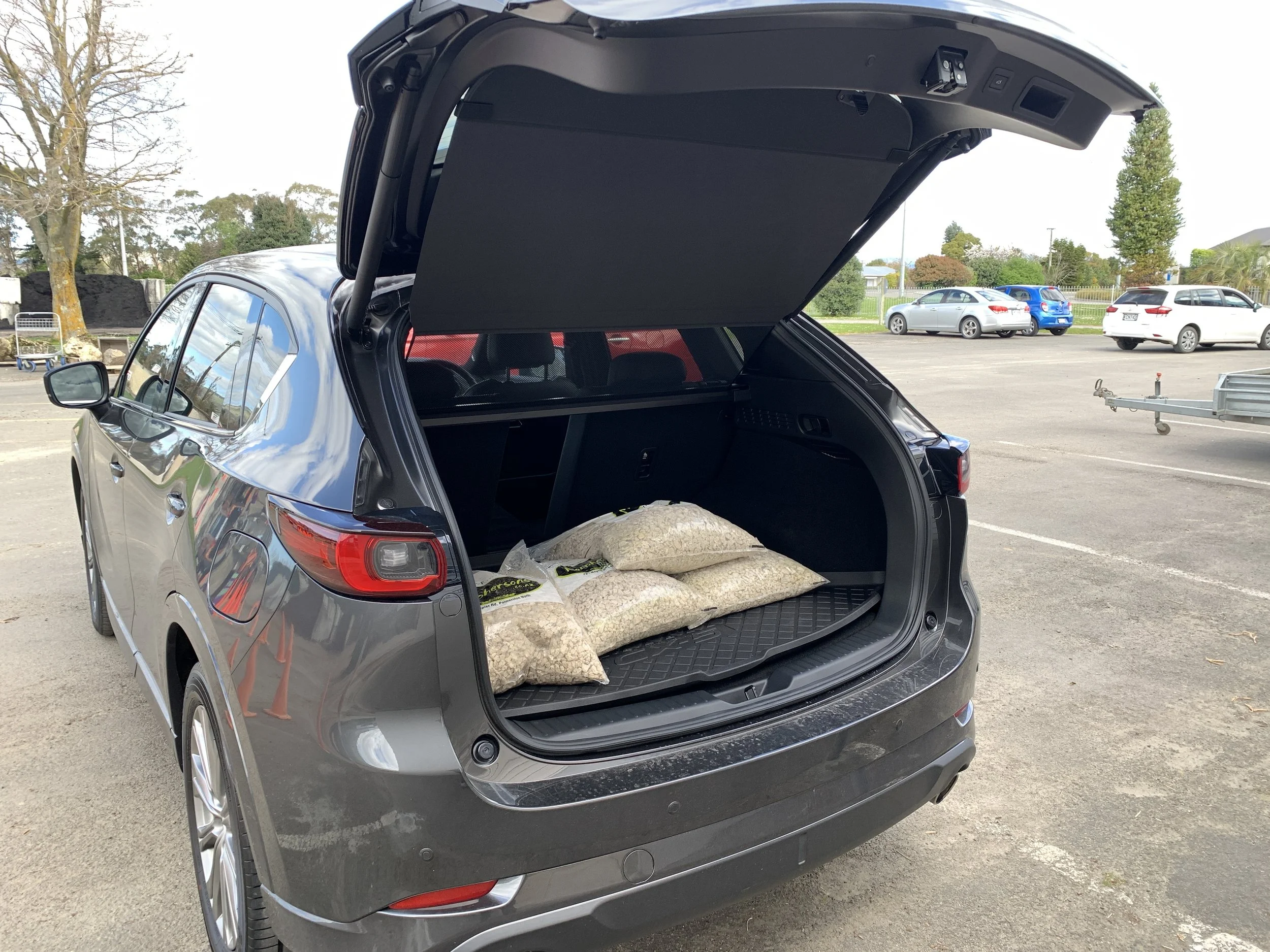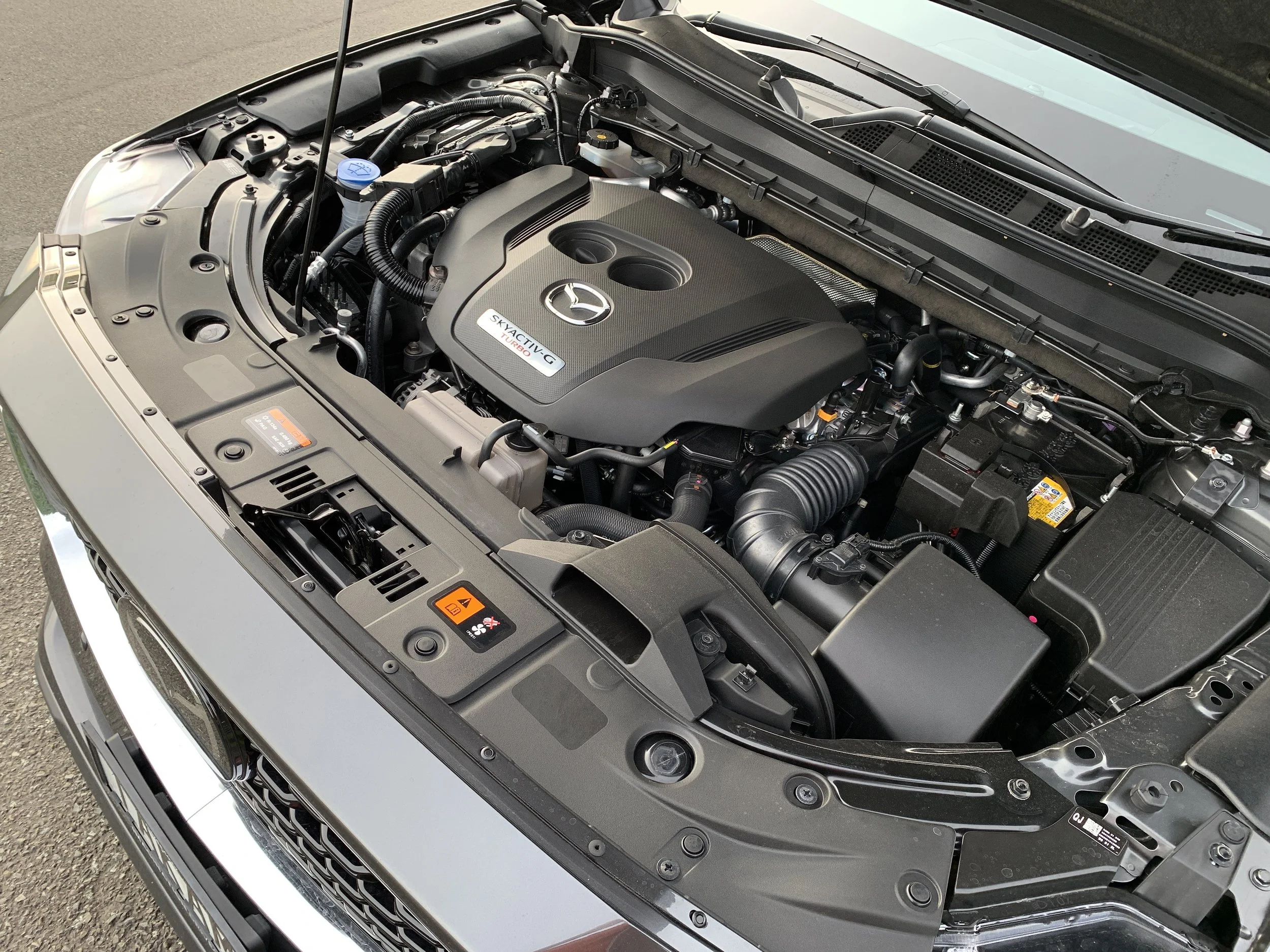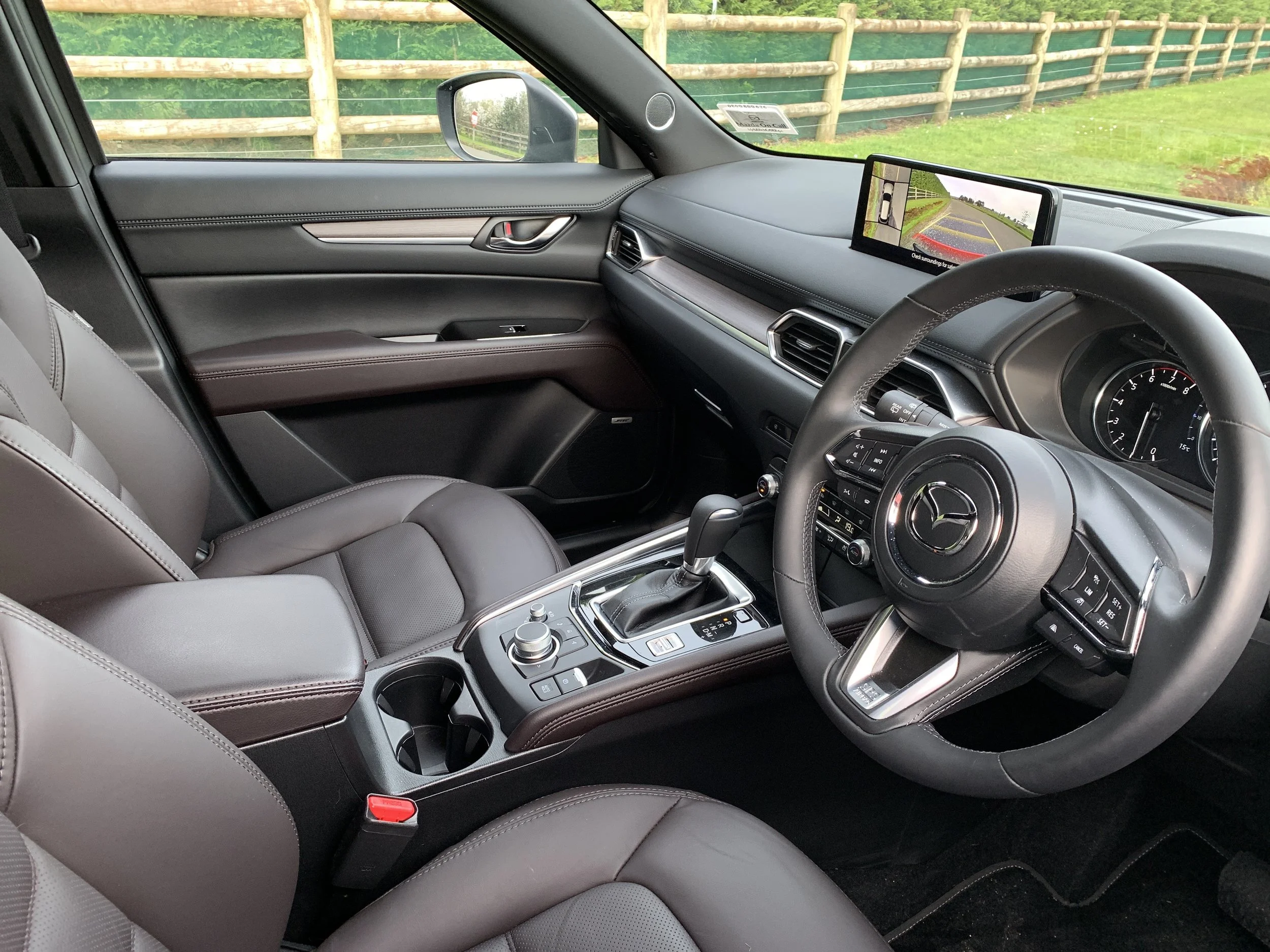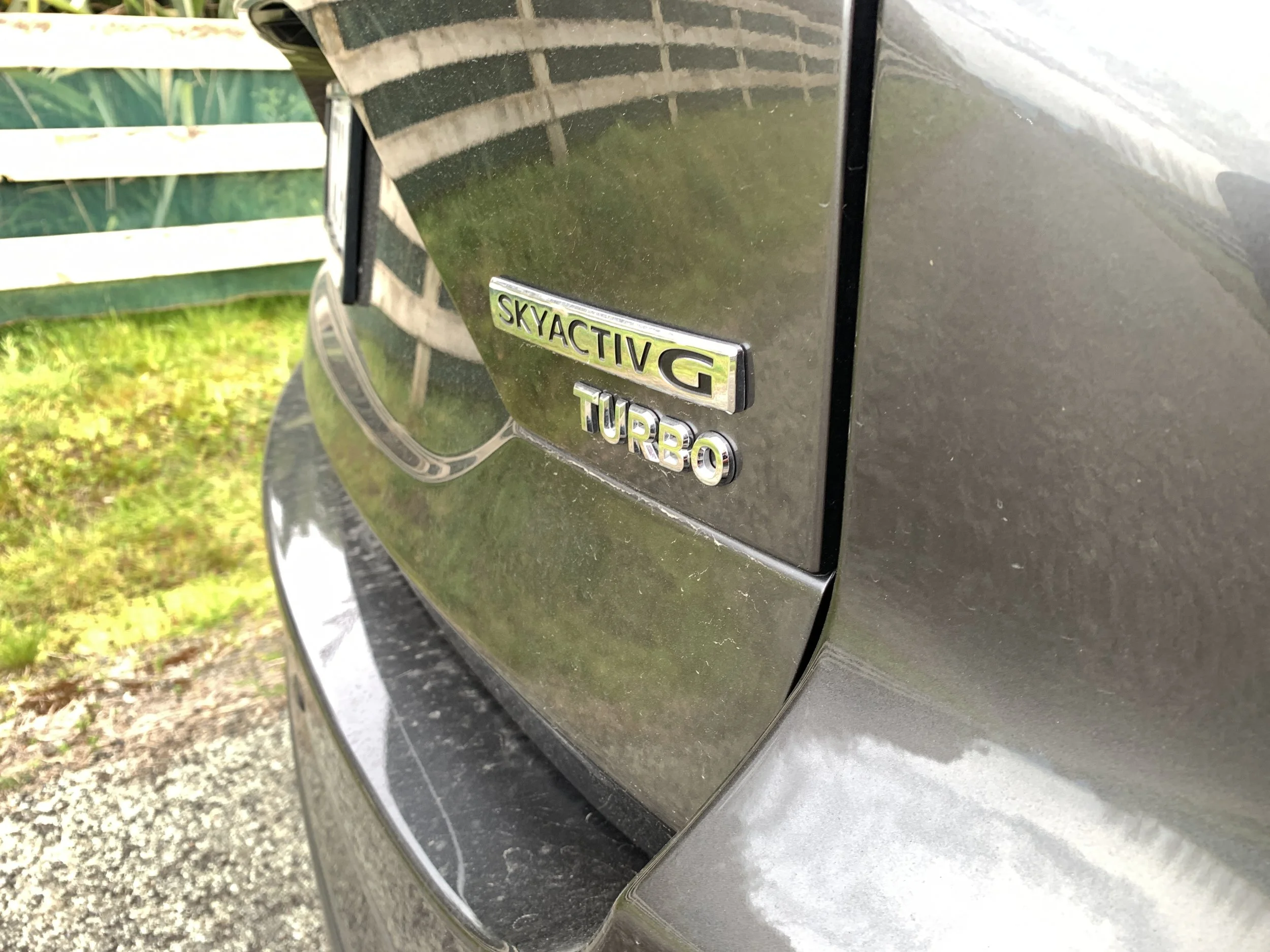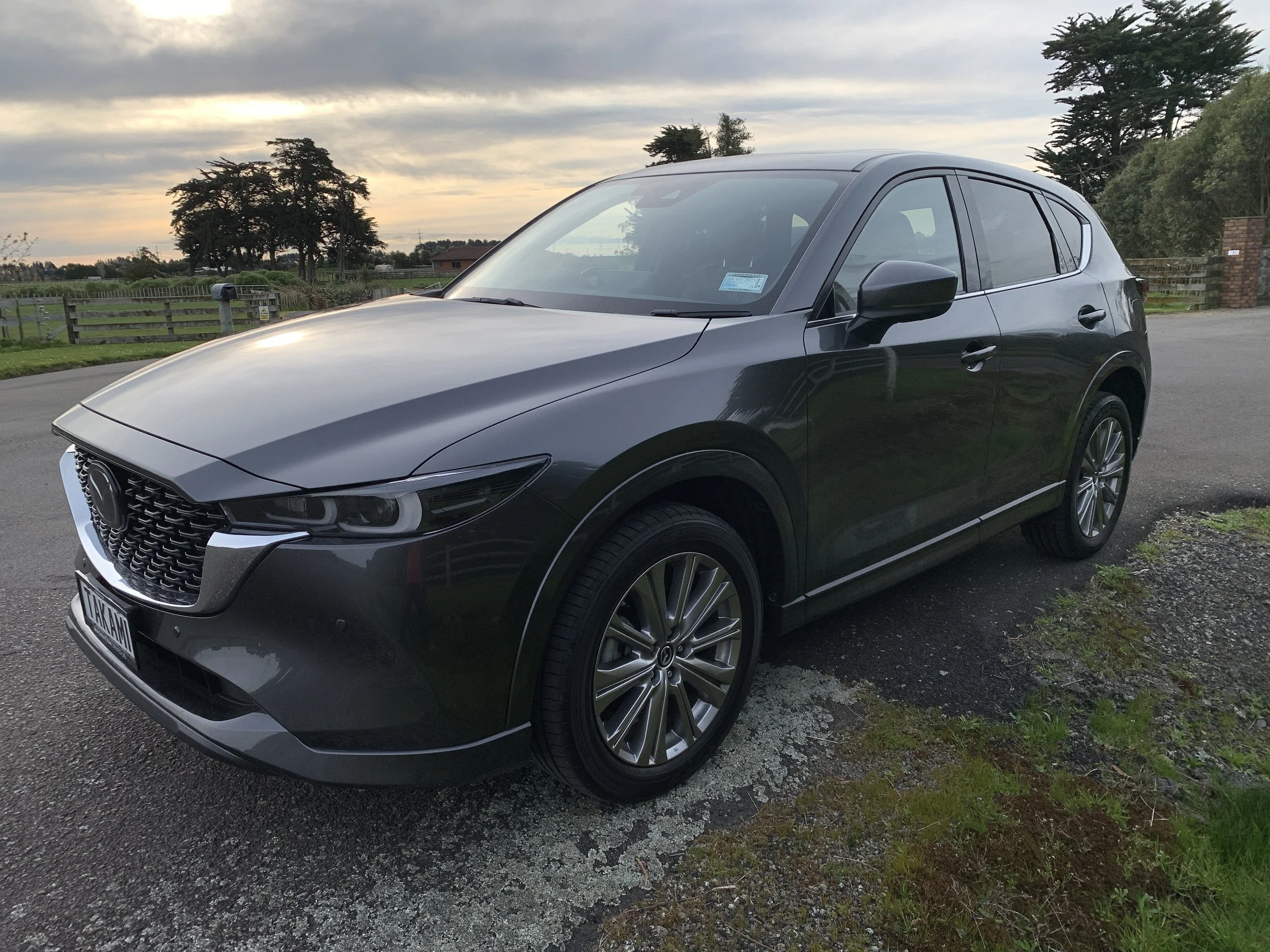Mazda CX-5 Takami roadtest review: Taking it to a T
/This turbocharged version of a popular model delivers panache to a segment rich with pragmatic choices. But is it in step with swinging tastes?
Price: $64,690
Powertrain: 2.5-litre four cylinder turbocharged petrol, 170kW/420Nm, all-wheel drive, six-speed automatic, 9.1L/100km, 213g/km CO2.
Vital statistics: 4575mm long, 1845mm wide, 1680mm high, wheelbase 2700mm.
We like: Likeable engine, driver-friendly road manners, smart looker, comes alive on curvy roads.
Not so much: Tight rear legroom, no electrification ingredient.
THAT strange sense of feeling younger than you are is apparently very common.
After about age 25, most people think of themselves as younger than their chronological age. And the gap in what science defines as “subjective age,”, widens with time.
Hiroshima’s medium sports utility is doing a good job of feeling younger than its actual years, given it has been around in its current form since 2017.
Not that you’d necessarily know it. Mazda, as is its general policy, has kept the CX-5 fresh with almost half a dozen updates, the most recent rolled in this year and already there’s talk of more change coming in 2023. No rest, right?
The most recent tweaks encompass styling revisions, with smoother front and rear ends that include new headlights and taillights. There was also a bit of dabbling in the cabin. All this to keep it modern enough to ensure that it still manages to keep good enough volume to hold steady as the local distributor’s top seller.
One area of change has been the engine bay. Having been there, done that with turbocharging and diesel, Mazda is now marrying forced induction with a 2.5-litre petrol. This new choice surely stands as the most intriguing powerplant yet for this car, and introduction a time of growing demand for electrification as well as increasingly stricter emissions requirements, might raise eyebrows. Yet it is nonetheless a choice with merit.
Achieving the turbo means refining to the high end of the range, within the all-wheel-drive choices, where it positions in the SP25T (yes, the badge really does say it all) and in the $3000-dearer Takami.
Worth the spend? Top-of-the-tree Takami is a nice package for sure. Whether it’s an absolute must-have? Maybe that’s going to be subject to some discussion.
The engine, though, is definitely worth thinking about, simply because it has so much more torque than the other petrols – just 30Nm less than the diesel exerted – while topping them all for power.
I know what you’re thinking. This is Mazda delivering more ‘sports’ to their sports utility. And it’s true that it does add real oomph to a car that holds strong standing for its eager and engaging driving dynamics. If you ask it to.
Evidence from daily driving, though, suggests the real impetus for allowing this marriage of an engine that began life in the much larger CX-9 is to achieve the same outcomes that make the bigger vehicle so good.
Basically, in both applications, the benefit isn’t just a six cylinder-ish kind of surge but also a step up in smoothness that doesn’t evidence as strongly in the other four-cylinder choices.
With the turbo engine, you get a quieter and refined operability. So, while it can evidence a decent turn of push-off pace, with 0-100kmh in 7.7 seconds, and strong mid-range pull, what’s more appreciated in everyday life is that it’s also more relaxed than might be expected, given the fizz up. As said, the shove over the non-turbo 2.5-litre is certainly decent; you’re getting 168 more newton metres, however the car feels up to taking it.
The strength of that relationship carries through to the interaction with the transmission. Mazda’s six-speed is an old-school thing now, in respect to cog count, but it isn’t overwhelmed by this big extra loading of muscularity.
Kept in the standard mode, you really don’t have to bother with the steering wheel shifters, so seamless and intuitive are the changes. Going to Sport is an entirely different story; that’s when you’re playing with the paddles, because the engine’s response is so much sharper and more alert.
Obviously, the harder you push, the greater the fuel burn but, if it is driven more sensibly, that side of things isn’t too bad.
Is it ‘right’ for the times? The only evidence of electrification with CX-5 is the quick-reacting stop-start system. There’s no talk of a hybrid option, let alone a plug-in hybrid or full electric. Yet, while a turbo is not what you'd call innovative, it's still relevant and reasonably responsible.
Plus, it does suit a car that remains a joy to drive. You cannot beat a CX-5 for steering feel, feedback and responsiveness. The G-Vectoring tech, which imperceptibly lifts the throttle when you turn the wheel, shifts the weight forward to the front wheels to ensure a better turn-in and more secure feel on corner entry.
This, combined with a sense of agility from the chassis, makes it a good choice for taking on twisty roads. The electrically assisted steering provides satisfying responses and even though it mostly runs in front-wheel drive to save fuel, the all-wheel-drive is also well-resolved in that it quickly, and often imperceptibly, kicks torque to the rear wheels when it starts to get slippery. It also remains still a decent cruiser, though there is some tyre noise.
Mazda’s cabin design is solid and Takimi finishing makes the CX-5 feel especially upscale, yet while the styling refinements are welcome, and overall quality levels are excellent, there's definitely a sense of age intruding into this space. The instrument panel’s mixture of analogue and digital displays is one example where it’s starting to fall behind. Looks-wise, it’s handsome, but functionality is lacking, with restricted customisation options.
The infotainment operating system is better than it started out; the problem – for me - is that it looks like it should be a touchscreen but basically isn’t.
The basic control is the little click-wheel down on the centre console. Conceivably that makes it less distracting to use on the go, but I kept getting foxed. I do like how it continues with proper physical ventilation and air conditioning controls.
In front of the gear lever there's a new wireless phone charger, though it does not match up with wireless Apple CarPlay or Android Auto, which these days is surely a bit of an own goal. Cabling in is the deal for that link, accomplished by two USB sockets and a 12-volt socket in the storage box under the centre armrest.
There are two more USB sockets in the rear seats, but you'll have to search for them - they're also under the rear-seat armrest lid, which opens to reveal a shallow storage tray and some cupholders. When will the car update to USB-C? Apparently, that’s with the next refresh, likely in early 2023.
There are cupholders in the front too, of course, and these are mounted down low. The idea is that a container in them won't get in your way when the gear shifter is employed. Be careful in your choice of drinks; while the holders are good for small water bottles, the insulated travel cup I used for a coffee proved a poor choice. It didn’t tip, thankfully, in the first decent turn, but tilted enough to get my attention.
Space is plentiful in the front seats, though a bit more limited in the back, if you and the front seat occupant are tallish. The rear seats split-fold 40:20:40 and chances are you’ll be knocking down the seats on recycling centre visits. That boot is clever for design features – there’s an almost-flat load lip, a clever luggage cover, a power socket, a rubbery cover on the reverse side of the boot floor – but nothing will divert from identifying that capacity is a bit tight. If luggage room is important, best not cross shop against the Toyota RAV4.
CX-5’s life span is coming to the point where a lot of industry pundits are wondering what’s next.
Assumption a new generation is coming seems sound; this car has been a huge success. What will it be like, which badge might it wear – faithfulness to the new numerical designations Hiroshima now uses surely calls for a replacement to become the CX-40? - and what would it be based on are burning questions that are yet to be answered.
In the meantime, it’s known Mazda has more refinements in the pipeline for the car as we currently know it. Mainly small specification adjustments. Perhaps, though, if they’re thinking of issuing other special developments, they might give thought to putting the turbo engine into the Activ edition that also issued earlier this year.
The latter doesn’t necessarily need more outright zap, but the additional low and mid-range muscularity the turbo brings would be a nice enhancement for the variant that is most kitted for off-road adventure. With the Activ at $50,990 as is, it might give Mazda opportunity to bring this engine into the sub-$60k zone, where a lot more consumers shop. Just a thought.


